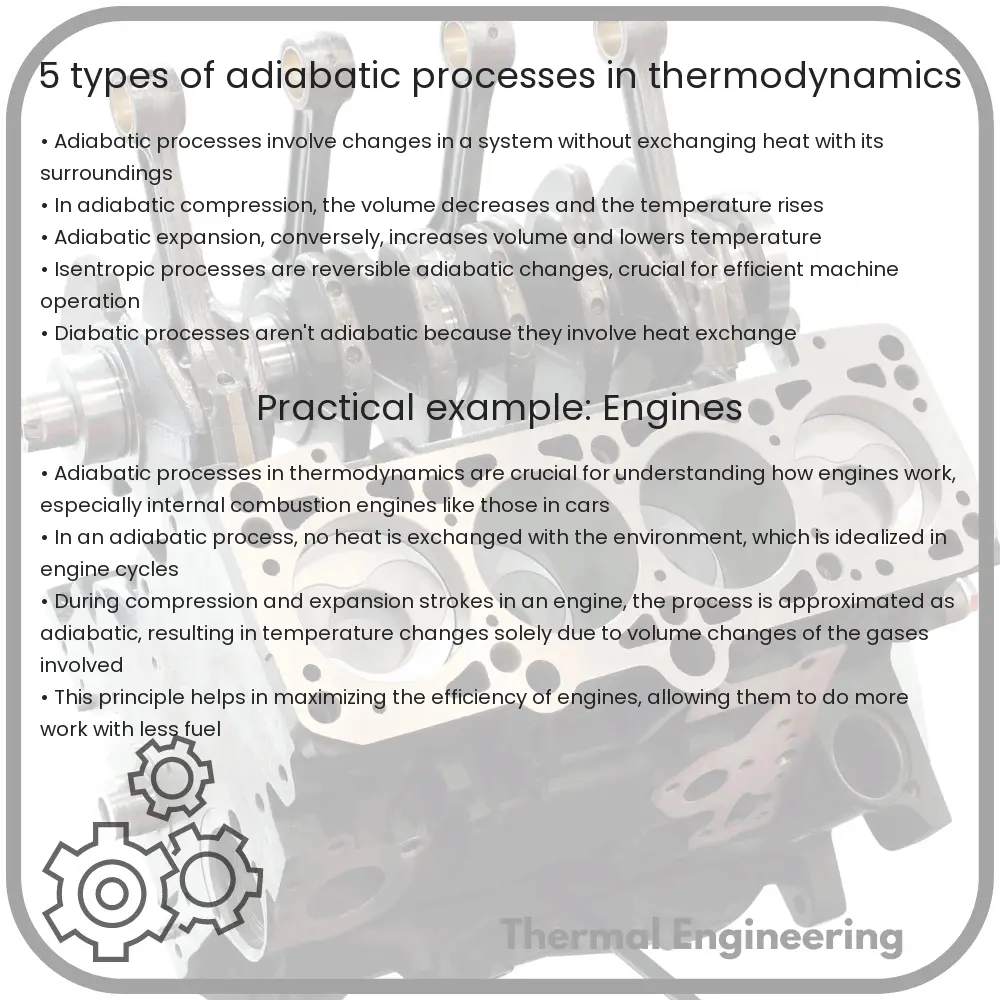Explore the key aspects of adiabatic processes in thermodynamics, highlighting their role in engineering and physics without heat exchange.

Understanding Adiabatic Processes in Thermodynamics
Adiabatic processes are a fundamental concept in thermodynamics, describing situations where no heat is transferred into or out of a system. In these processes, changes in pressure, volume, and temperature occur without any exchange of heat with the surroundings. This can lead to various interesting and useful effects, especially in engineering and physics. Here we explore five types of adiabatic processes that highlight the versatility and applications of this thermodynamic principle.
1. Isentropic Process
An isentropic process is an idealized adiabatic process that is both adiabatic and reversible. This means there is no heat exchange with the surroundings (Q = 0), and there is also no increase in entropy (dS = 0). The isentropic process is significant in applications like the operation of turbines, compressors, and nozzles where efficiency is critical.
- Equation: \( PV^\gamma = \text{constant} \) where \(\gamma = \frac{C_p}{C_v}\) is the ratio of the specific heats.
2. Adiabatic Free Expansion
Adiabatic free expansion is a type of adiabatic process that occurs when a gas expands into a vacuum. Since there is no external pressure exerted on the gas during expansion, the work done by the gas is zero (W = 0). Although the internal energy of the system remains constant, the temperature does not necessarily stay the same, depending on the specific gas nature.
- Characteristic: For ideal gases, the temperature remains constant during free expansion though this isn’t generally true for real gases.
3. Polytropic Process
A polytropic process is a more generalized form of an adiabatic process where the heat transfer does not necessarily equal zero, but the relationship between pressure and volume during the compression or expansion follows a specific polytropic relation defined as \( PV^n = \text{constant} \).
- Polytropic Index \(n\): If \( n = 1 \), the process is isothermal; if \( n = \gamma \), the process is isentropic (adiabatic and reversible).
4. Adiabatic Throttling
Adiabatic throttling is a process where a fluid flows through a valve or a porous plug while maintaining a constant enthalpy. This process is adiabatic because there is no heat transfer, but it is also irreversible due to the creation of entropy.
- Application: Common in refrigeration cycles, where it helps control the refrigerant’s pressure and temperature without energy exchange.
5. Isochoric Adiabatic Process
While most adiabatic processes involve changes in volume, an isochoric process occurs at a constant volume. This means that there is no work done by the system (W = 0). For an adiabatic isochoric process, the change in internal energy results only from changes in temperature.
- Relevance: Important in understanding the behavior of an ideal gas held at a constant volume but allowed to exchange heat.
In summary, adiabatic processes play a crucial role in thermodynamics, particularly in engineering applications involving fluid dynamics and energy systems. By understanding these processes, engineers can design more efficient and effective machines and systems, from power plants to refrigerators.